Imagine this: your whole finance team is working from Gmail. You are receiving all those messages with invoices in your shared email address —such as billings@ or accounts@— at the same time. And each teammate doesn’t need to leave their personal inboxes, since it’s possible to have both in one account.
Does it seem impossible to you? What if we say that besides being completely possible, there are a bunch of collaboration features in this new inbox? All these elements united will result in the only Invoice Tracker Template you can have right inside Gmail.
Here you are going to find out why an invoice tracker in excel doesn’t make sense anymore. Moreover, we will tell you how to use Gmail for this purpose, step by step resulting in high performing and more productive finance teams.
Why use an invoice tracker template in Gmail
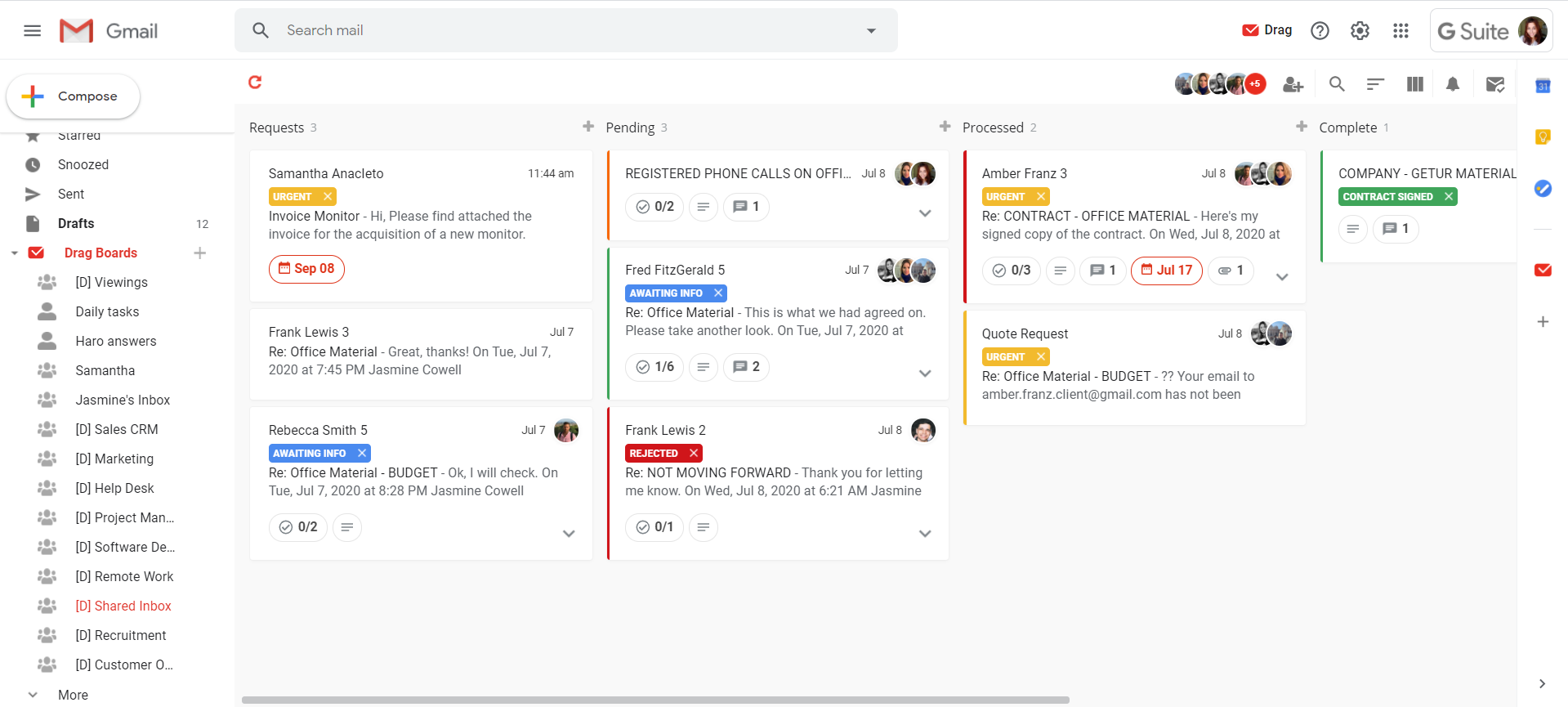
The main reason why Gmail should be your new workflow to track invoices is that many, if not all of them, arrive as emails. The work gets a lot more productive if you keep all your processes in your inbox.
However, in a regular team inbox, forwarding, cc’ing and bcc’ing emails are very common and quite bothersome steps. They can generate confusing threads and a lack of accountability. Besides, there aren’t many features in vanilla Gmail to make it functional for invoice management.
But when you ally Gmail with a shared inbox tool that works inside of it, you get another perspective of work. And Drag is one of these tools that work integrated to Google’s email service. Moreover, it offers so many features that turn your inbox in a complete and customizable workflow. That’s why it serves many different purposes, and invoice tracking is one of them.
Here are some benefits of using Drag in your Gmail inbox:
Work in a visual and personalized way
Drag provides two views on boards: Kanban and List. You can choose the one according to your preferences any time you want, with just one click of a button. Besides, it’s possible to customize your Drag boards by naming the columns with each one of your workflow stages. A blank Drag board comes with the pattern of columns “To-do, Doing, and Done”, so you can understand better how it works.
There are also other features such as color-coding and tagging, to help you set a workflow that the whole team can understand what is happening with just a glance.
All of these elements help to track all the finances’ progress at every stage, optimizing work and speeding up the processes.
Eliminate the context switch to increase productivity
Usually, finance teams use spreadsheets and invoice management tools to track their payments. Moreover, they use a team email inbox to receive the billings. And you can add instant messaging apps or the companies internal software to this sum of tools.
Let’s be honest, how much time per day do you think a person loses doing context switching between so many tools? Certainly, an amount of time that they would spend better on the actual work.
With Drag in Gmail, you can centralize your processes, working where you receive your payment requests by email, and even using Google Chat to talk to colleagues from your entire organization.
You can eliminate at least two extra tools and some steps, saving money and converting context switching into productive time.
Get all the info you need in just one place
When you use Drag in Gmail, everything you need for invoice tracking will be right in your inbox:
- You can create tasks and subtasks inside your email cards;
- Attribute due dates to billings emails;
- Attach links and files;
- Assign tasks to team members;
- Tags describing levels of importance, the value of invoices;
- Add notes in email with the main information;
- Chat with your team inside a card, and @mention specific team members;
How to build your own template
Creating a new template to manage payments with Drag in Gmail is really quick and straightforward. Nonetheless, this example of the Invoice Tracker template we are proposing is highly customizable, so you can build it according to your needs and based on how your current workflow is running at the moment.
There are seven simple steps you need to follow, so your team can completely use the available resources to create a functional template.
First of all: Install Drag for free
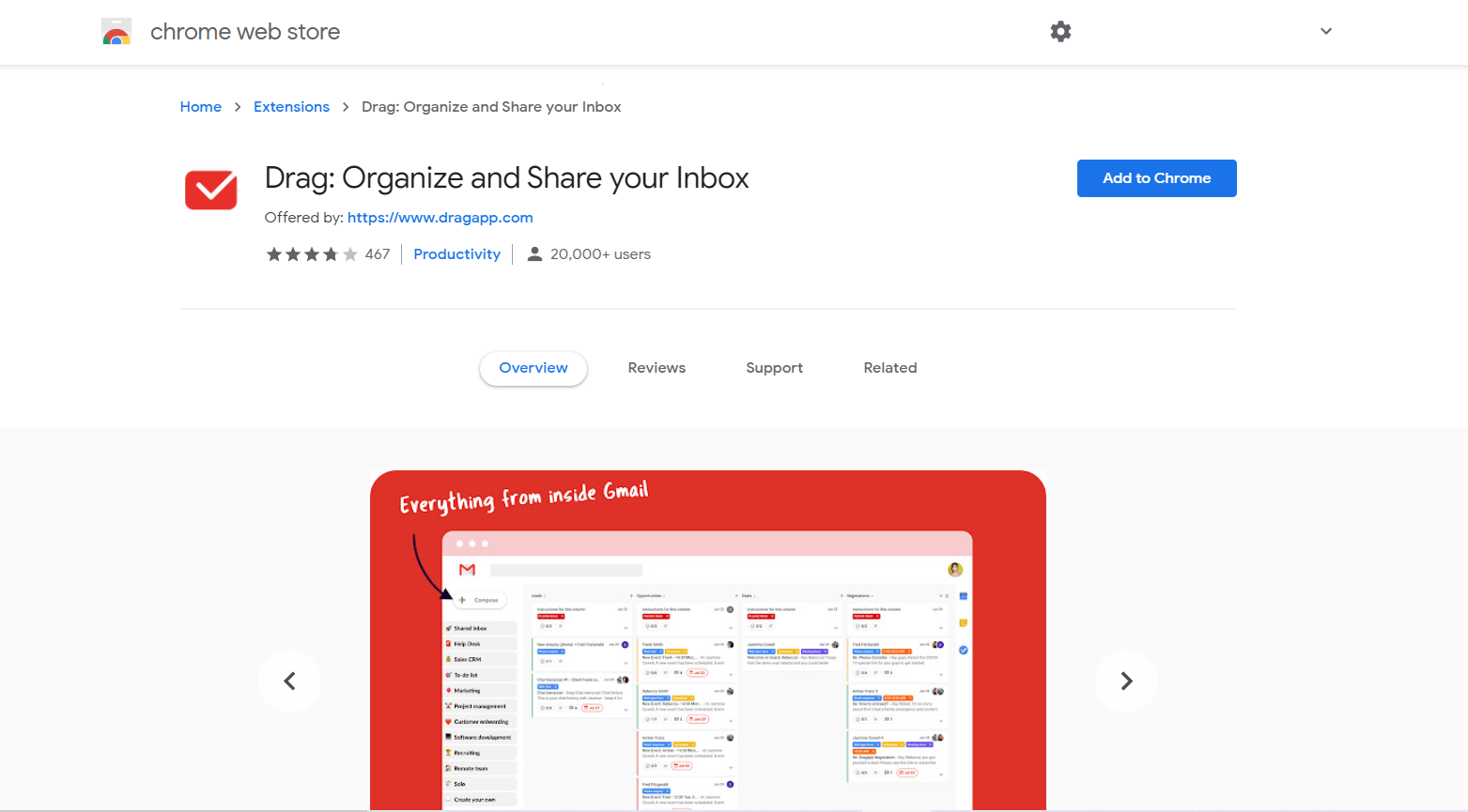
To turn Gmail into a complete workflow to track invoices you need to add Drag’s Chrome Extension to your browser. But don’t worry, it’s free and it just takes a few minutes.
Next, you need to open or refresh your Gmail tab, so a popup with Gmail’s authorizations can appear on the screen. After reading it, accept the permissions to allow Drag to work on your Gmail inbox.
And as simple as that you are all ready to start managing invoices in your Gmail account.
Step 1: Get a better view of work
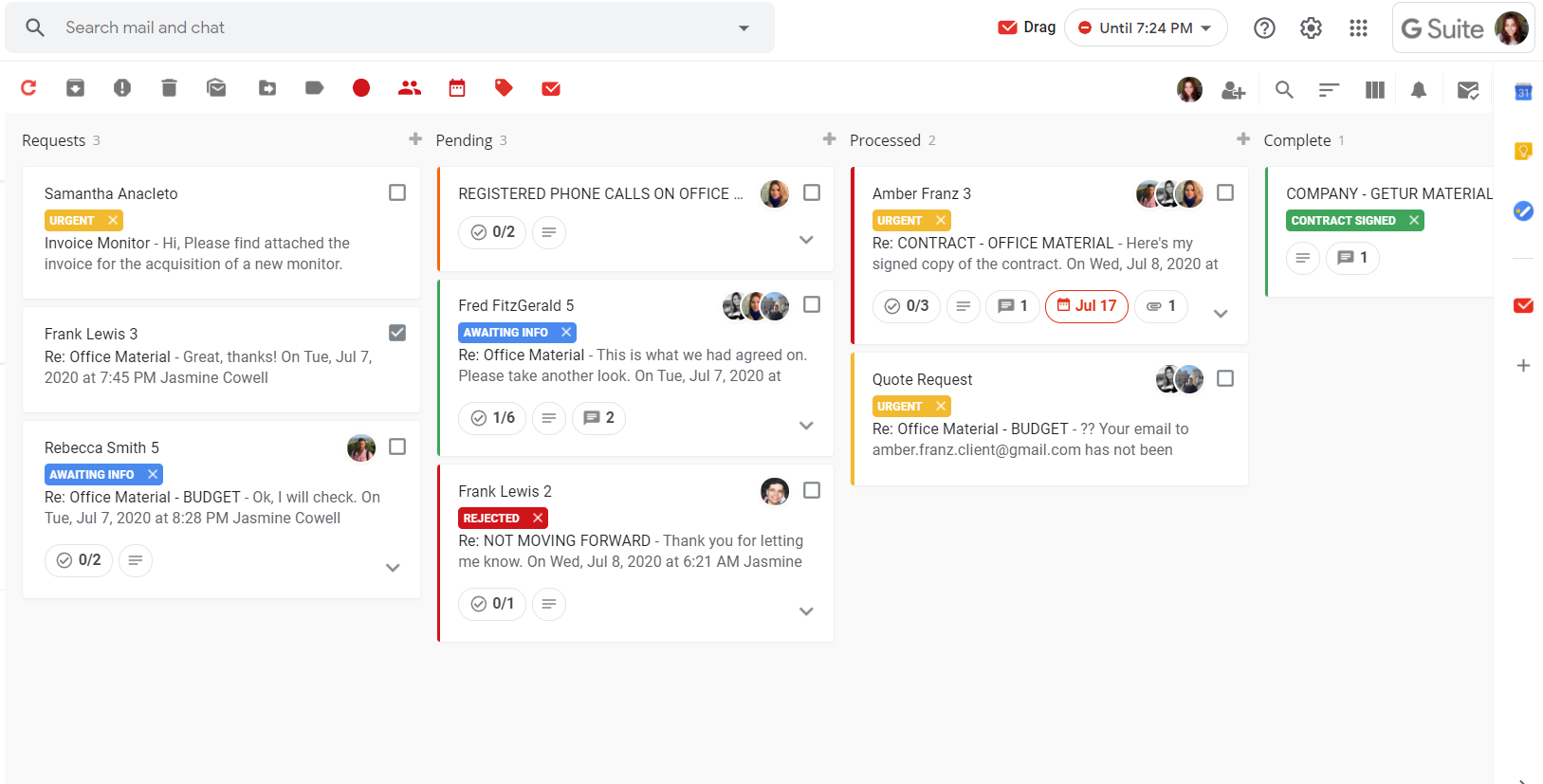
Drag boards provide a holistic view of your invoice management process. It doesn’t matter with you choose Kanban or list, you will be able to see a big difference in your email organization. You can visualize and interact with the board by setting columns that you can name with the necessary stages for your projects.
These columns are adjustable, so you can resize them whenever you need, and even change their order if necessary.
Once you have your cards inside the board, you will be able to easily drag and drop them between these columns. This process helps you change and track all the payment status in a much more clear and faster way.
Step 2: Fill your board with incoming billings
The first column of your invoice tracking template is where all the incoming billings will arrive. You can add your billings in three different ways:
- Receive emails on a team shared inbox, such as billings@;
- Drag emails from a personal inbox to the team inbox;
- Create cards and filling them with payment’s information;
Share your team’s inbox
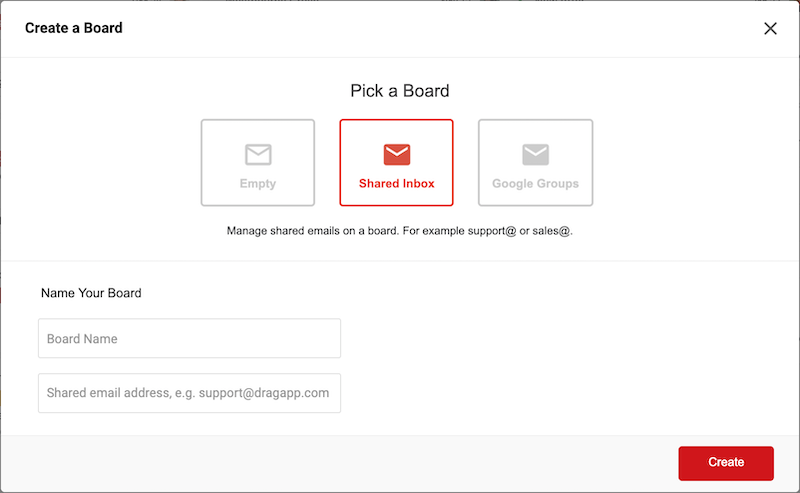
Some finance teams use alias email addresses such as [email protected] or [email protected]. And many of them still share logins and passwords to work inside their team accounts, so they can all receive finance emails. The good news is that there are much safer and straightforward ways to do this. Ways that can eliminate the difficulty of understanding what is going on with so many emails, and all the Fwd’s, Cc’s, and Bcc’s.
Teams need a clear workflow, that just with a look and a few clicks they can figure out what they have to do next.
So, with Drag, teams can set dynamic shared inboxes, where they receive emails in real-time on their team inbox. The best part: they don’t need to leave their personal inboxes. You can add all the team members to this shared board, where they will be able to read and reply to emails as part of a team.
Emails that arrive on personal inboxes

Payment requests can also come from the team members’ personal inboxes, such as [email protected]. That’s why you can just drag emails from your inbox to the team’s inbox. Quick and easy.
Requests coming from other channels
In some cases, payment requests can come from other channels depending on how the company works. That’s why you can also create cards from scratch, and fill them with all the data available about these requests.
Notice that you can also create cards inside shared boards, so you can centralize all the applications in just one place.
Step 3: Assign tasks to team members

With just two clicks you can assign any email with tasks to a specific team member. And you don’t need to write and send any message to them. Drag does everything for you, sending an email with the notification of the assignment automatically.
Notice that the assignee’s photo will appear in the top-left corner of the card. Then you will be able to easily visualize who is doing each task.
Step 4: Set due dates

All invoices have due dates, and the finance team needs to be well aware of them. With Drag you can easily mark the invoice card checkbox and click on the calendar icon, in the top menu that appears, to choose the final date.
Then Drag creates an event in your Google Calendar, where, by the way, you can share a team schedule. Besides, you can edit this event without leaving your inbox. You just need to click the Calendar icon on the right menu and go to a specific date. Your event will be there, and you will be able to add guests, add information, a video meeting link, and what is necessary for the team to be on the same page of any finance task.
Step 5: Attach files, links, images
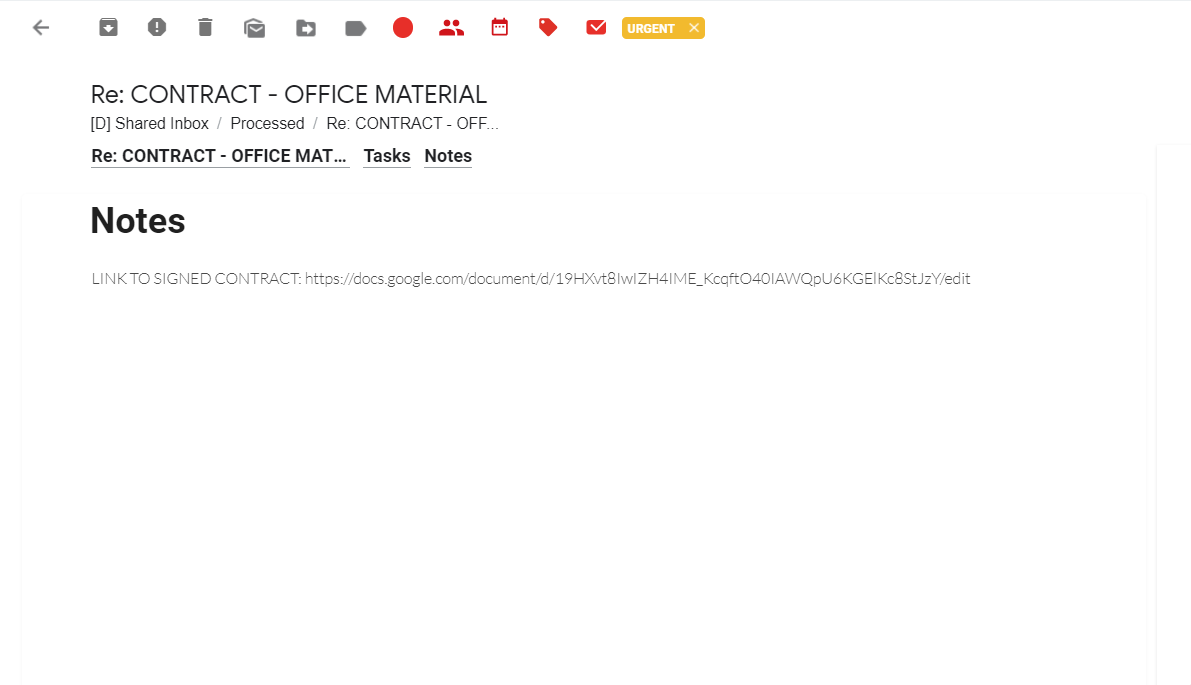
Once you open a card that requires attachments, click the tab Notes. There you will be able to add URLs containing links to screenshots, documents, and images.
Step 6: Chat with the teammates with context
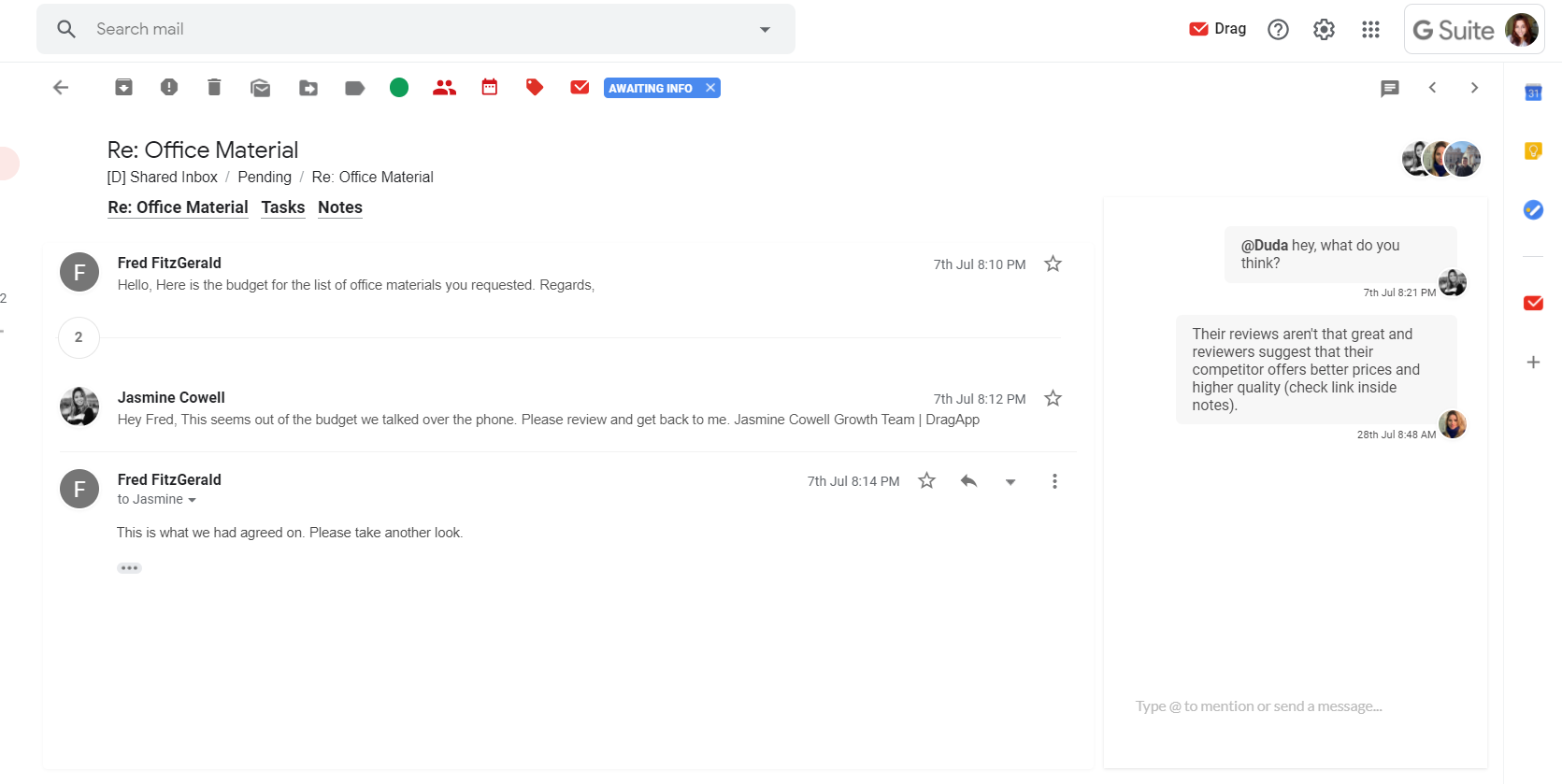
Remember how fewer tools can make your team a lot more productive? That’s why with Drag in Gmail you can stop using a third-party chat too, such as Slack or Skype. Besides being able to use Google Chat inside Gmail, each card in your board has an internal chat, where can mention team members with specific contextual reminders.
You just need to type @ and the name of a team member. Then they will automatically receive an email, notifying them that they need to take action in that specific card. The messages arrive in real-time, and they stay there on the card, so you can read it at any time to have all the context you need.
In case you need an expense report from other teams of your organization, you can also mention the member you want to ask something. But notice that this will work only if the other team has drag installed too.
Step 7: Automate repetitive tasks
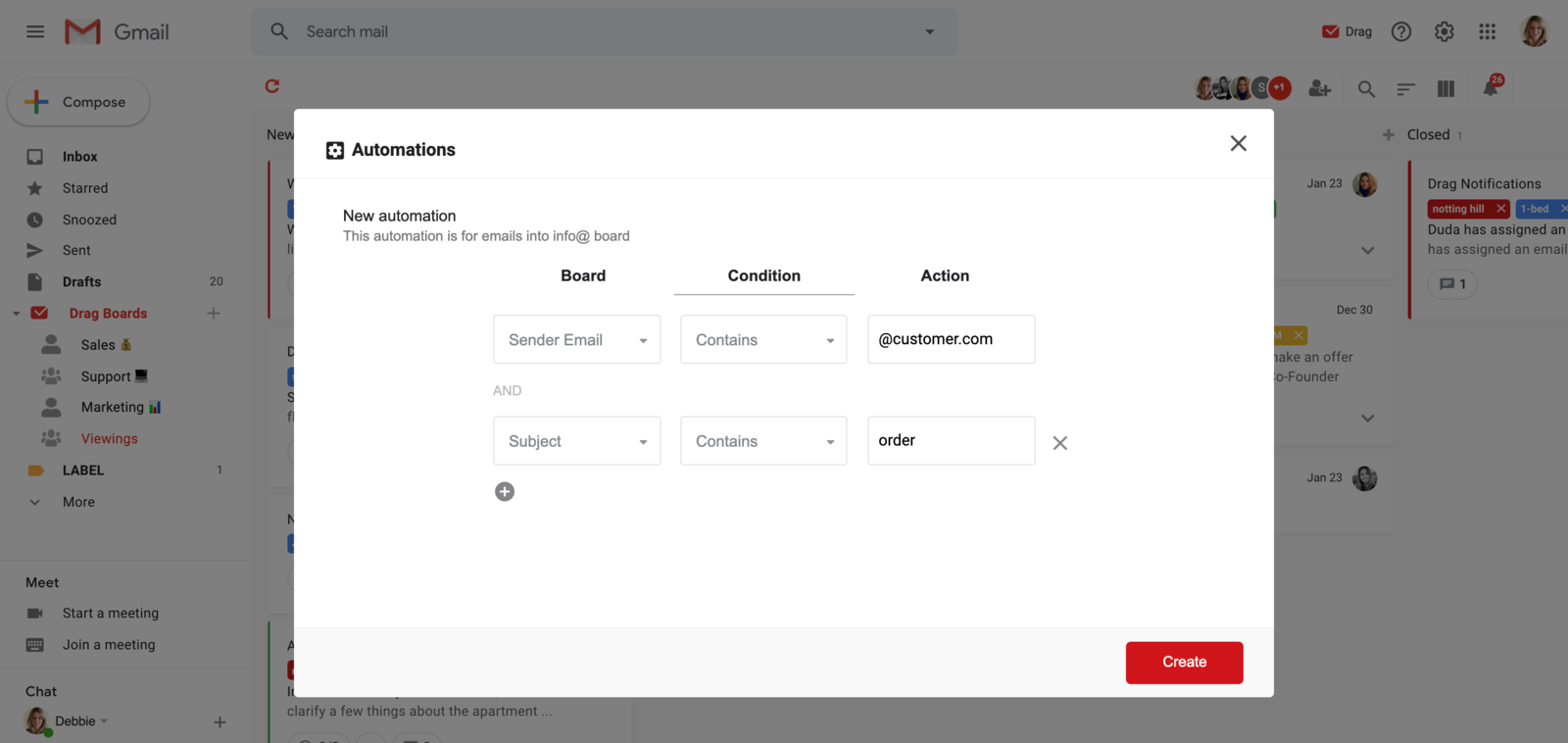
At last, you can set automations to stop doing repetitive tasks, such as moving emails to specific boards, auto-tagging, or auto-assigning to a team member.
For instance, if an email contains “invoiceâ€, you can automatically assign it to the team member responsible for processing invoices. To set automations click on “Drag” on the top menu of Gmail. Then click “Automations” to start creating yours.
Moreover, you can also send email templates when you move cards from a column to another. So for example, when you move an invoice to the column “Complete” Drag will automatically send a confirmation email to the address you specify.
Wrapping up
And that’s it. Now your invoice tracker template in Gmail is all set, and the finance team of your company can have more straightforward processes to manage billings.
Turn Gmail into an Invoice Tracker Template.
Drag turns Gmail into your Team’s Workspace – One single place to support customers, manage tasks and close deals, from the place teams love: Gmail. We are a Techstars-backed Company, trusted by 30,000 users around the World.







